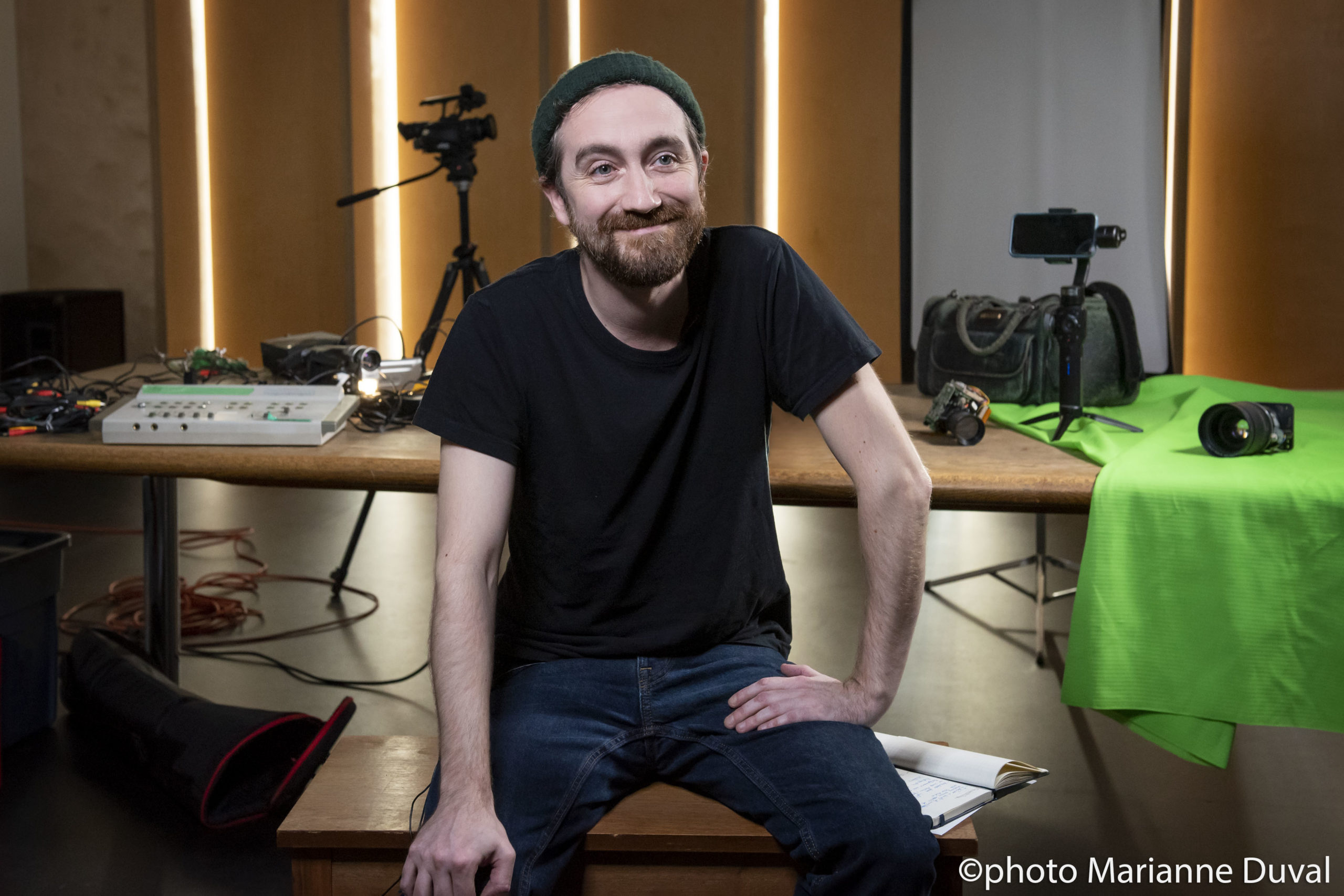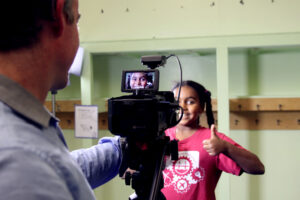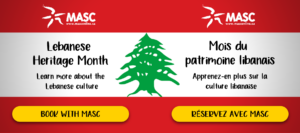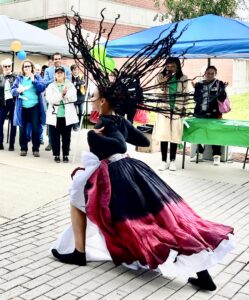Interview: Video artist Shaun Elie
By Jessica Ruano | January 4, 2022

This interview was originally published on Apt613.ca
Shaun Elie is an Ottawa-based video artist and videographer who offers video workshops that can adapt to different situations. He has worked with MASC for over 15 years, offering short workshops and residencies to students in both English and French, and collaborating with other MASC artists on large events and festivals. In this interview, he talks about the evolving nature of technology and how that influences the way he works in classrooms and communities.

Shaun Elie. Photo provided by MASC.
MASC: How would you describe your work life as a video artist? How have things changed for you over the years?
It’s different all the time! The technology has changed a lot over the years. The size of cameras and equipment has shrunk as the quality has improved. What used to take up the whole trunk and back seat of my car now fits in a backpack. The way in which we consume video has evolved a lot as well. As a video artist I would usually work with large-scale projections in mind; now most video is consumed on small devices. The evolution allows for greater participation and engagement from the public.
These days, video is consumed rather than experienced. I think that video as an experience is important and that is something I try to share with my students and express in my own work.
MASC: As a member of MASC, what do you gain through offering your workshops in schools and in the community?
Working in collaboration with fresh, creative minds is a very rewarding experience. Video is a medium that is conducive to collaboration and allows me to access and nourish a variety of talents in the students. It’s inspiring to see how groups tackle a given problem or project in different ways.
Over my 15+ years with MASC, I have worked with thousands of students on hundreds of projects, each one a new and distinct experience: from stop animation to green-screening, from creating video projections for live artistic performances to event documentation. We have created art installations in gallery settings with local galleries as well as guerrilla-style public art performances. Video affords a flexibility of creation and a diversity of expression that I find appealing.
I’ve also had the opportunity to collaborate with other artists through MASC. I recently worked on a play, “La plus grosse poutine du monde” with Vox Théâtre and Théâtre la Catapulte, where I created video backdrops for the production. I have also created video content to complement student live performances for MASC’s Awesome Arts en folie and Festival de danse en milieu scolaire. Whether it’s dancers, visual artists, musicians, or thespians, I have a passion for collaborations with local artists and arts organizations and take pride in using my talents to elevate the kaleidoscope of fine work that happens in this city.

Shaun Elie in his element leading a student workshop. Photo provided by MASC.
MASC: At risk of showing my age, I’ve noticed that kids these days are so clever with technology! Do you find you’re constantly having to adapt your workshops to keep up with students’ abilities, interests, and preferred media?
In the early years, I found I was introducing students to new technology – such as video cameras, laptops, lighting, and audio equipment – that they were perhaps familiar with but wouldn’t necessarily have any hands-on experience with. Now, I find my focus has shifted to using the equipment already on hand – like their own devices – in imaginative ways to create their works. I aim to embrace new trends, but I like to make a point of exploring the history behind these trends, how they evolved, and where they might lead us.
The essence of the workshop remains the same: I try to give students enough basic techniques to understand the medium and then create an environment where it is okay to break all the rules.
MASC: In your residencies, you offer participants the chance to explore key themes and issues in their video work. What types of ideas have you noticed coming up recently? What seems to be important to today’s youth?
Students will often try to recreate scenes from films, shows, memes, or Tik Toks. Sometimes, students are looking to use their voices to address more personal themes and I like to encourage that work. Whether the work is personal or nonsensical, I like to challenge the way students approach working with video, to break with their preconceived notions of the role of video in our lives and as a medium for artistic expression.

Shaun Elie. Photo provided by MASC.
MASC: Why do you think it’s important for our local community to have access to professional artists?
Artists bring a different perspective to classroom. Their presence give license to students to push themselves creatively and often discover hidden talents. Having a professional artist guide and encourage students can be a very gratifying experience. That validation can be a great source of self-worth and motivation for students to pursue other projects and overcome challenges.
Latest News
View All Articles



